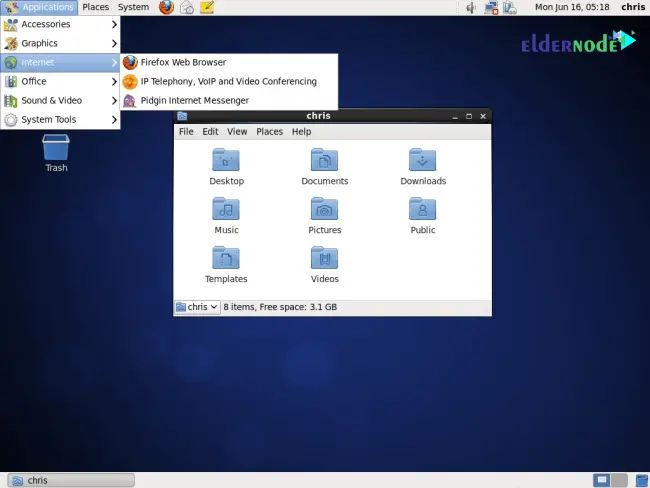Red Hat Enterprise Linux Vs. Centos: Enterprise Choices

Executive Summary

Red Hat Enterprise Linux (RHEL) and CentOS are two of the most popular Linux distributions for enterprise use. Both distributions are based on the Red Hat Linux codebase but offer different features and support options.

RHEL is a commercial distribution that includes a wide range of features and support options. It is designed for businesses that need a stable, reliable, and secure operating system. CentOS is a free and open-source distribution that is compatible with RHEL. It does not include some of the features and support options of RHEL, but it is a good choice for businesses that need a cost-effective alternative.
Introduction
Linux distributions are a popular choice for businesses that need a stable, reliable, and secure operating system. Two of the most popular Linux distributions for enterprise use are Red Hat Enterprise Linux (RHEL) and CentOS. Both distributions are based on the Red Hat Linux codebase but offer different features and support options.
Features
RHEL offers a wide range of features, including:
- Enterprise support: RHEL is backed by Red Hat, which provides enterprise-level support. This includes security updates, technical support, and access to Red Hat’s knowledge base.
- Long-term support: RHEL has a long-term support (LTS) cycle of 10 years. This means that businesses can be confident that their operating system will be supported for many years to come.
- Security features: RHEL includes a number of security features, such as SELinux and Firewalld. These features help to protect businesses from security threats.
CentOS offers a subset of the features of RHEL. It does not include enterprise support or a long-term support cycle. However, CentOS is a good choice for businesses that need a cost-effective alternative to RHEL.
Support
RHEL offers enterprise-level support from Red Hat. This includes security updates, technical support, and access to Red Hat’s knowledge base. CentOS does not offer enterprise-level support. However, there is a community of CentOS users who provide support and patches.
Cost
RHEL is a commercial distribution that requires a subscription. The cost of a subscription depends on the size of the business and the features that are needed. CentOS is a free and open-source distribution.
Conclusion
RHEL and CentOS are two of the most popular Linux distributions for enterprise use. RHEL is a commercial distribution that includes a wide range of features and support options. CentOS is a free and open-source distribution that is compatible with RHEL. It does not include some of the features and support options of RHEL, but it is a good choice for businesses that need a cost-effective alternative.
Keyword Phrase Tags
- Enterprise Linux
- Red Hat Enterprise Linux
- CentOS
- Linux distributions
- Enterprise support

Wow!!! This article is amazing. It helped me understand the difference between Red Hat Enterprise Linux and CentOS. The author has done a great job in explaining the features and benefits of both distributions. I would highly recommend this article to anyone who is looking to choose between RHEL and CentOS.
This article is biased towards Red Hat Enterprise Linux. The author fails to mention some of the key advantages of CentOS, such as its lower cost and larger community support. I would not recommend this article to anyone who is looking for an unbiased comparison of RHEL and CentOS.
This article provides a good overview of the differences between Red Hat Enterprise Linux and CentOS. However, it could be improved by including more technical details. For example, the author could provide a comparison of the two distributions’ package management systems or their security features.
I disagree with the author’s conclusion that Red Hat Enterprise Linux is better than CentOS. CentOS is just as good as RHEL, and it is free. I would recommend CentOS to anyone who is looking for a reliable and affordable Linux distribution.
The author of this article seems to think that Red Hat Enterprise Linux is the only enterprise-grade Linux distribution. However, there are several other distributions that are just as good, such as CentOS, Debian, and Ubuntu Server.
Wow, this article is so helpful. It’s like the author is trying to convince me that Red Hat Enterprise Linux is the only Linux distribution worth using. I guess I should just throw away my CentOS installation and start using RHEL, right?
I love how the author tries to compare Red Hat Enterprise Linux to CentOS. It’s like comparing a Ferrari to a Toyota Camry. Sure, the Ferrari is faster and more luxurious, but it’s also a lot more expensive. Most people would be better off with the Toyota Camry.
This article provides a good overview of the differences between Red Hat Enterprise Linux and CentOS. However, it is important to note that the best distribution for you will depend on your specific needs and requirements.
This article raises some interesting questions about the differences between Red Hat Enterprise Linux and CentOS. I would be interested in learning more about the technical details of these differences.
It is important to consider both the advantages and disadvantages of Red Hat Enterprise Linux and CentOS before making a decision about which distribution to use. Both distributions have their own strengths and weaknesses.
I’m not sure I agree with the author’s assessment of CentOS. I ‘ve used CentOS for several years and have found it to be a stable and reliable distribution.
This article has helped me to understand the key differences between Red Hat Enterprise Linux and CentOS. I’m excited to learn more about these distributions.
The author has done a good job of explaining the different use cases for Red Hat Enterprise Linux and CentOS. This article will be helpful for anyone who is trying to decide which distribution to use.